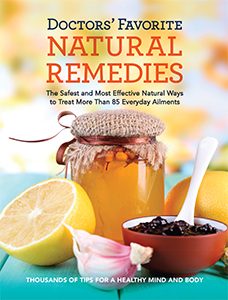Elimination Diet: How It Works to ID Allergies and More
Updated: Jun. 20, 2016
Why temporarily removing certain foods from your diet can boost your overall health.

There’s growing proof that foods can activate and worsen a wide variety of health conditions—from allergy symptoms to painful joints. Identifying and eliminating troublemakers can reduce symptoms or at least help prevent them from growing worse. Elimination diets are widely recommended for uncovering food culprits. The details of the diet vary for different conditions and you should ask your doctor about your particular situation. Here is a basic outline of how an elimination diet works.
How an Elimination Diet Works
By removing specific foods and ingredients that you suspect are causing a reaction, you can pinpoint triggers and keep them off your plate—and out of your body. This helps eliminate a wide variety of food reactions. Trigger foods can push your immune system into overdrive causing digestive upset, fatigue, and a feeling of unease, as well as boosting inflammation, worsening eczema, rheumatoid arthritis, and other inflammatory conditions.
How to Use an Elimination Diet
An elimination diet is a four-step process. First, determine what could be causing problems. You may need to track your symptoms and diet for a week or more to find suspects.
Common food allergy and intolerance triggers include wheat, gluten-containing products, milk, eggs, citrus, nuts, and soy, as well as certain chemical food additives such as monosodium glutamate. Headache triggers can include the compound tyramine (found in many cheeses, processed meats, red wine, and other foods) as well as food additives such as nitrites and colorings. Foods that may worsen rheumatoid arthritis symptoms include red meat, sugar, fats, salt, caffeine, gluten, tomatoes, and eggplant. Eczema flare-ups may commonly be fueled by dairy, eggs, or nuts; but citrus, wheat, seafood, and food additives have also been implicated.
Having decided on the potential triggers, the next step is to eliminate them all for one to two weeks. Be sure to replace key nutrients and keep your diet balanced. If your symptoms don’t improve, go back to your regular diet and consult your doctor.
If your symptoms do improve, the next step is to reintroduce trigger foods one by one every three days to see which foods cause a reaction. If you don’t have symptoms for a day or so after a food is reintroduced then the food is likely to be safe to eat.
Finally, create a new, healthy diet plan for yourself that does not include your trigger food(s).
Safety First
Long-term elimination diets can lead to malnutrition; don’t follow one for longer than two or three weeks. And if you have a dangerous or life-threatening food allergy, do not try to reintroduce trigger foods.

Get More Natural Remedies Doctors Approve!
The book Doctors’ Favorite Natural Remedies offers effective ways to treat more than 85 health conditions and evaluates the most commonly used alternative therapies and supplements. Learn more and buy Doctors’ Favorite Natural Remedies here.